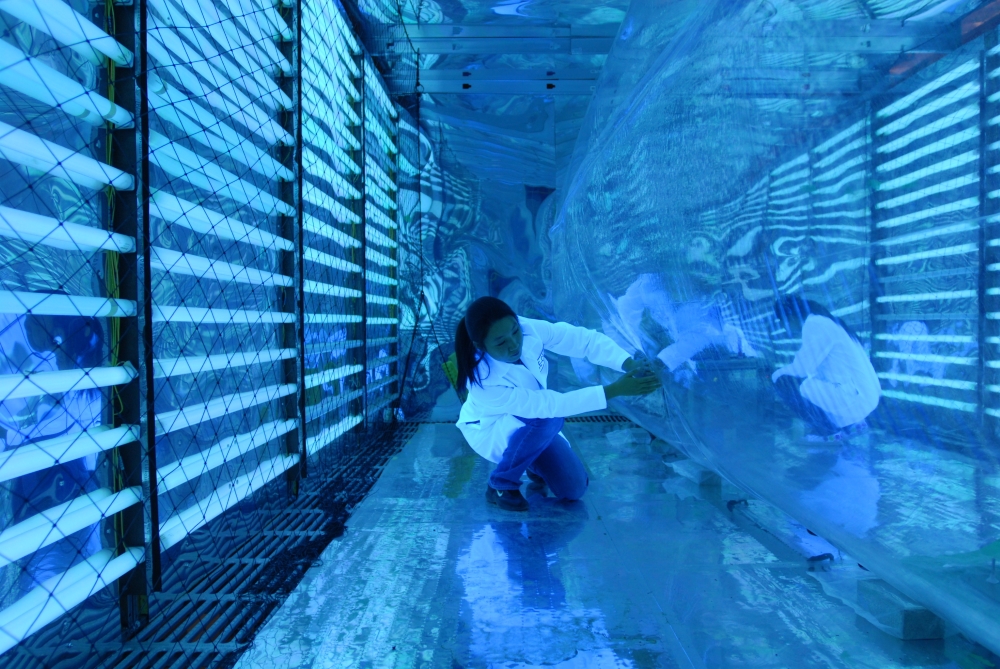Clean energy, higher education, health/life sciences and the arts are among the sectors in alignment.
You can’t be an empire without leaders. The Inland Empire region of Riverside-San Bernardino-Ontario, California, continues to demonstrate leadership in a number of areas — and attract global industry.
Riverside County in November 2024 welcomed one such leader when Argentina’s Voltu Motor Inc., a maker of a new class of commercial electric trucks, announced it would locate its global headquarters and manufacturing facility in the City of Riverside, with 20 of the first vehicles off the line destined to serve the city’s utility, streets and parks departments.
The company plans to produce 14,000 vehicles over its first three years of operations and employ more than 400 people within the next four years, rising to 700 over time. The City of Riverside will be the point of sale, meaning that sales taxes from the vehicles will return to the city to help pay for local quality of life improvements.
“Riverside offers not just a logistics hub, but also an ecosystem aligned with our values of trust, prosperity and sustainability,” said George Gebhart, founder and CEO of Voltu Motor, at the project announcement. “Now working with the city, we’ve seen Riverside’s potential as a green-tech powerhouse.”
Other green vehicle and greentech companies in the region include electric motorcycle manufacturer Ryvid and EV maker Karma Automotive, as well as New Zealand-based Ohmio, whose CEO Dean Zabrieszach last year told Site Selection’s Ron Starner that Buy America and SelectUSA helped the company decide to locate a 15-hour flight away from home.
“UC-Riverside was the initial contact we made,” the CEO told Starner. “The city showed a huge welcoming gesture to us. We quickly learned that the cost of doing business in Riverside is better than it is in other parts of California. Plus, the city is keen on working with us. Several academic partners in the area want to work with us too.”
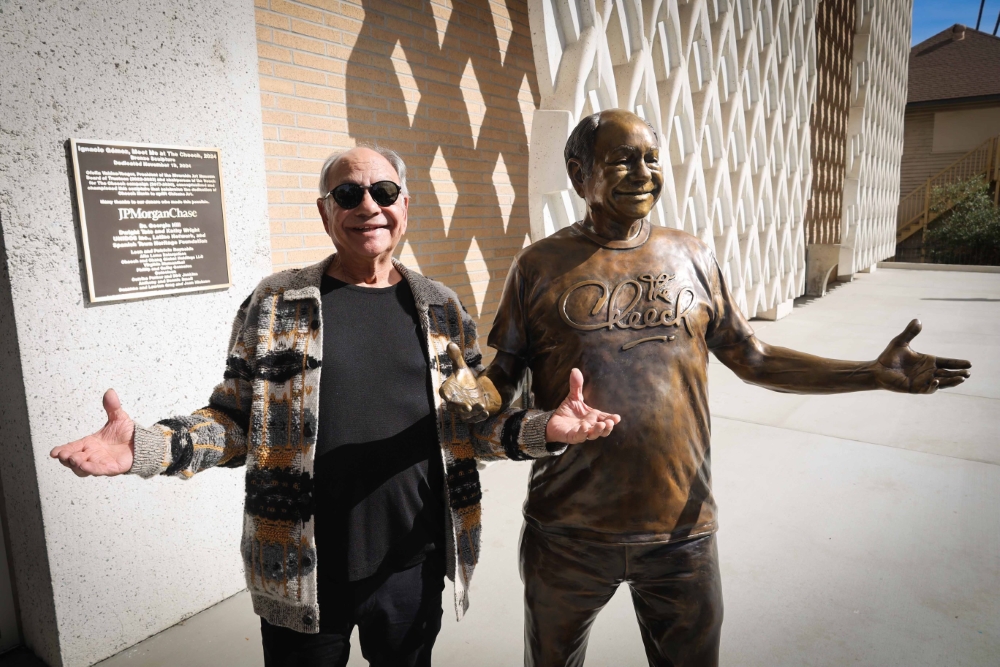
Dedicated in 2022, the Cheech Marin Center for Chicano Art & Culture, aka “The Cheech,” showcases Chicana/o/x art in a building that once served as the City of Riverside’s public library. It is home to the Cheech Marin Collection of Chicano art.
Photo courtesy of City of Riverside
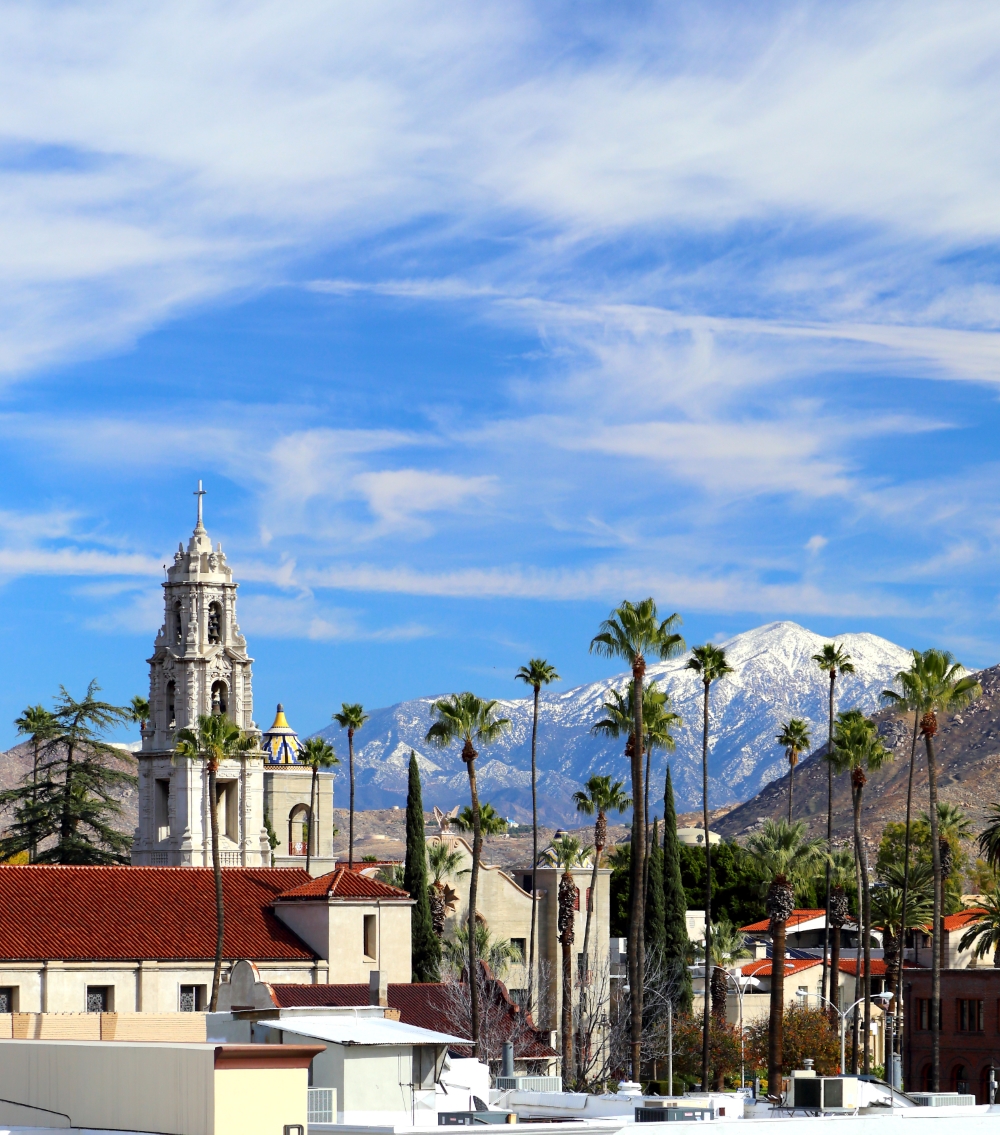
Tiffany Yu, development specialist with the Riverside County Office of Economic Development, says the range of landscape is what stands out to her about living in the area. Yes, there’s desert, but mountains are there too.
Photo courtesy of City of Riverside
Voltu’s Gebhart said the company’s journey to Riverside started almost two years ago also working with UC Riverside, one of the city’s three universities alongside Riverside Community College. As with Ohmio, it also didn’t hurt that the important California Air Resources Board (CARB) chose Riverside for its second HQ, which opened in 2021. An executive order from CARB validating the Voltu 3’s compliance with CARB standards qualifies Voltu for California’s Hybrid and Zero-Emission Truck and Bus Voucher Incentive Project (HVIP), allowing fleet customers to offset acquisition costs and advance sustainable vehicle options.
“Voltu is well situated to meet a growing demand for electric trucks that will be required by local governments all over the state in the coming years,” Riverside Mayor Pro Tem Jim Perry said in November. State law requires municipalities to add zero-emission vehicles to their fleets as a percentage of their purchases each year. The percentage will rise from 50% in 2024 to 100 % by January 1, 2027.
The company’s relationship with UC Riverside involves the institution’s Center for Environmental Research and Technology (CE-CERT), Office of Technology Partnerships, Small Business Technology Transfer Program and Build to Scale Program.
“One of the key reasons I believe Riverside was the right choice for Voltu is the incredible talent pipeline we’re cultivating,” said UCR Vice Chancellor of Research and Economic Development Rodolfo H. Torres at the project unveiling. “UCR is home to some of the brightest engineering students and researchers, many of whom are working on cutting-edge projects in areas like battery technology, clean energy and advanced manufacturing.”
Arts & Culture as a Growth Industry
Clean energy is one of several surging sectors in Riverside County, alongside health services, health tech & life sciences; housing; higher education itself and the not-to-be-forgotten arts, culture and tourism arena. They say every site selector begins as a tourist, after all. And what tourist doesn’t want to come to the county that hosts Coachella?
“Greater Palm Springs has a long history of attracting visitors who fall in love with the region’s quality of life and ultimately choose to invest, start businesses, or relocate their companies here,” says Colleen Pace, chief sales and marketing officer for Visit Greater Palm Springs, a region that encompasses nine cities. “We’ve seen examples of this in sectors like hospitality, health care and creative industries. One notable trend is remote workers and entrepreneurs discovering the area as a lifestyle destination and deciding to set up businesses. The region’s strong tourism base provides a steady pipeline of prospective residents who bring fresh ideas, capital, and job creation.”
“I moved to Greater Palm Springs for work over 20 years ago expecting a relatively short stay,” says Pace’s colleague Sean Smith, director of economic development, Visit Greater Palm Springs. “What I didn’t realize at the time was just how quickly my wife and I would fall in love with the destination and the incredible community of people who make it so specia … The welcoming community, thriving business environment and unmatched quality of life continue to inspire me every day.”
Margery Haupt, deputy director of Parks, Recreation, and Community Services for the City of Riverside, says family brought her to the city. “The community and people of Riverside is what kept me here,” she says. “The diversity of educational and business opportunities with the ability to work and learn in the same city I live in has been a huge plus for me. The diversity and depth of arts, culture and entertainment of the city make it special.”
Devin Parr has represented wine country in the region (there are 50 wineries) for a decade on behalf of the Temecula Valley Winegrowers Association. She says one thing not to take for granted is the county’s “small-town feel with big-city amenities and infrastructure. There are so many different pockets of tourism and industry, from hospitality to technology to agriculture and more.”
When Parr arrived in the area in 2015, she was was attracted by the fact that there was a vibrant wine country “right in Southern California — one that was welcoming, beautiful and, most importantly, relatively affordable by California standards.” While business leaders are barraged by reports of California authorities getting in the way of getting things done, she says in Riverside County “there is immense collaboration among the county and local businesses as well as collaboration among local businesses themselves … There is a region-first mentality.”
Health Services, Health Tech & Life Sciences
“Health care is one of our fastest growing industries,” says Kimberly Wright, economic development manager for the Riverside County Office of Economic Development, growing rapidly because of the growing population in the county. Among the firms establishing a foothold in the region is Genovics, located in the southern portion of the county close to San Diego County. It’s only a matter of time, she says, before companies in Greater San Diego start to organically move into Riverside County.
Among the new hospitals, medical offices, wet labs and incubators is The Wellness Village in Mead Valley, where Riverside University Health System (RUHS) and PMB joined local leaders to celebrate the topping-out in February. They say the campus will transform health care by integrating behavioral health treatment with medical care and social services. At nearly the same time, RUHS opened Franklin Residential Care Facility & Behavioral Health Clinic.
Apprentices Catch On
According to the Inland Empire/Desert Center of Excellence for Labor Market Information (COE), the Inland Empire, comprised of San Bernardino and Riverside counties, had 13,626 active apprentices as of September 2024, 69% of whom are in the county’s surging building and construction sector. The center stated, “While the Inland Empire labor force accounts for 11.2% of all California workers, the region’s 13,262 active apprentices represent 14.2% of all apprentices in California.” In 2018, California Governor Gavin Newsom set a goal of reaching 500,000 active apprentices by 2029.
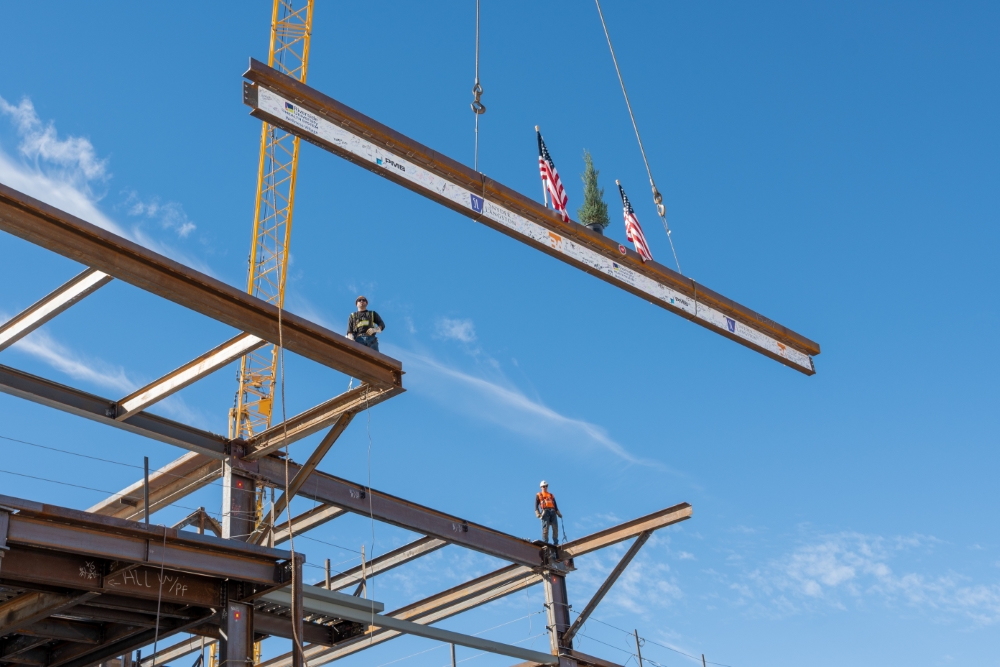
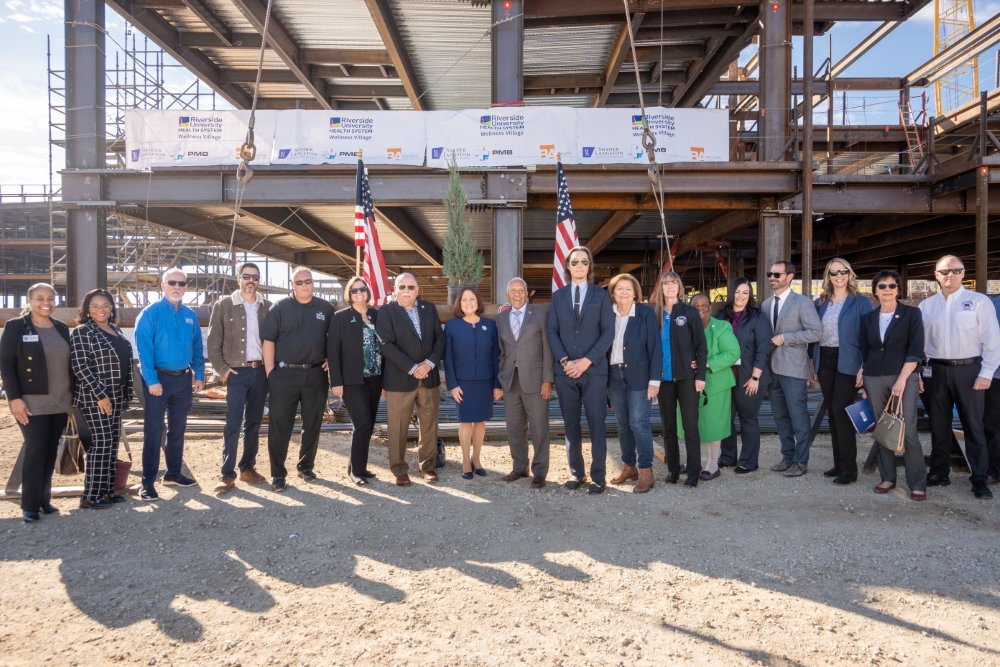
Riverside University Health System (RUHS) and PMB joined local leaders to celebrate the topping-out in February of The Wellness Village.
Photo courtesy of RUHS
“Creating pathways to high quality jobs is critical to keeping the Inland Empire economically competitive,” said Matthew Mena, executive director of Inland Economic Growth & Opportunity (IEGO), which manages the COE. “It has made a major impact in workforce readiness by providing effective ways for young people to gain the skills they need for lucrative employment.” Helping connect those young people to those jobs is the LAUNCH Apprenticeship Network, an intermediary and education provider for businesses adopting the apprenticeship model.
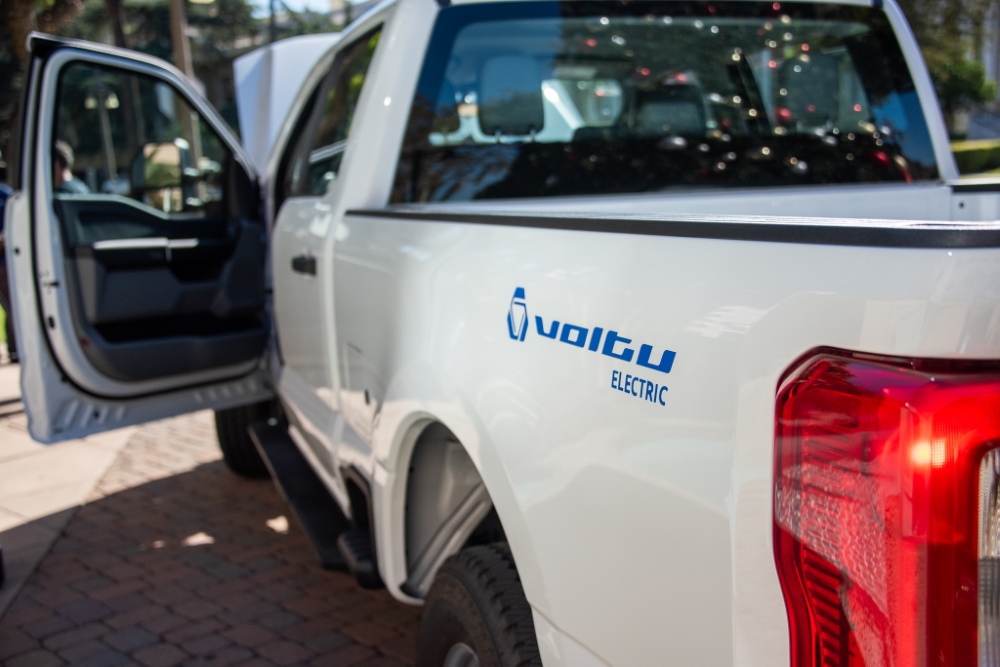
The Voltu vehicle and Ohmio’s LIFT vehicle — from companies based in Argentina and New Zealand, respectively — will be manufactured in Riverside County, where the California Air Resources Board’s second HQ and UC Riverside have been supportive.
Photo and drawing courtesy of Voltu

Up with the Upstarts
Site Selection’s analysis of the 2024 Inc. 5000 revealed California as the far-and-away leader by number of Inc. 5000 companies (672). It also revealed a number of Riverside County’s 28 cities punching above their weight when it comes to fast-growing firms. The municipalities of Murrieta and Temecula, each with populations just over 100,000, claim three Inc. 5000 companies apiece, with Riverside (2), Eastvale and Palm Desert accounting for four more among them. The highest ranked is No. 687 NETFLY, a motor vehicle accident data company in Eastvale serving personal injury law firms. Reinforcing the county’s clean energy leadership, the next-highest-ranked among those 10 companies are Temecula-based residential solar installer Freedom Forever (No. 1,937) and Palm Desert–based Sunlogix Energy (No. 2,322). Here are the others by location:
Murrieta: ProSites (No. 3,700); The Grey Legal Group (3,895); Shoup Legal (4,667)
Riverside: Empire Technologies Group (3,452); Active IT Solutions (4,176)
Temecula: Perceptyx (4,211); IDIQ (4,885)
There’s no reason more fast-growing companies won’t be blossoming soon in the county from its nine innovation centers and incubators, including iHub Palm Springs, UCR ExCITE, UCR’s Life Sciences Incubator, Temecula Valley Entrepreneurs Exchange and Inland Empire Tech Bridge. Find out more at www.rivcoinnovation.org.
Housing & Economy
With a national housing affordability ranking of 188 among Milken Institute’s 2025 Best-Performing Small Cities, the Inland Empire of Riverside-San Bernardino is not cheap by any means. That doesn’t mean Riverside County isn’t making progress on attainability, however.
In a December presentation at the Riverside County Economic Summit, Lance Martin of The Martin Group | Coldwell Banker Town & Country noted a median home sale price in the county of $597,625 in November 2024, around $200,000 higher than five years previous. He then said that, believe it or not, Riverside County is still affordable, because neighboring county median prices are rising much faster and to higher price points: more than $972,000 in Los Angeles and more than $1.3 million in Orange County. And while listings in neighboring counties were all down in November 2024, Riverside County’s were up.
Meanwhile, in the rental market, more units are popping up, including 15,000 apartments from the 760-acre Aquabella project approved by the City of Moreno Valley in November.
At the same summit, Christopher Thornberg, founding partner of Beacon Economics, pointed out that one of the many points of economic rivalry between California and Texas was the rate of housing development: Over the past decade, Texas has steadily put up 50,000 more to 100,000 more and beyond compared to California’s home-building volume. What the region needs, he said, is denser job centers and infrastructure investments to keep up with the growth.
As for workforce, the five-year growth rate of payroll employment in the Inland Empire as of September 2024 was 10.1% and the labor force growth rate was 5.9%, both healthier than nearly every other California metro area. From 2019 to 2023, the Riverside County cities of Eastvale, Perris and Moreno Valley all saw employment growth rates of over 20%, with Eastvale over 31% and the county’s namesake City of Riverside growing by 7.1% to the county’s highest employment total of nearly 190,000 jobs. The good news for employers? The county’s average annual wage of just over $60,000 was a good $20,000 lower than Orange County’s.
The county’s non-residential construction market has surged for years to reach nearly $740 million in activity as of September 2024, led by a manufacturing sector whose construction activity grew by 189% over the preceding five years. The biggest booms are occurring in Eastvale and Murrieta (over 200% growth over five years), with the City of Riverside and Jurupa Valley holding steady, but the county rate is down by nearly 60% even as more than $340 million in permits were issued in 2024.
Emerging from a jumble of national, state and regional indicators, Thornberg’s conclusion was that Riverside County is home to “one of the most successful middle-class economies in the nation.”
